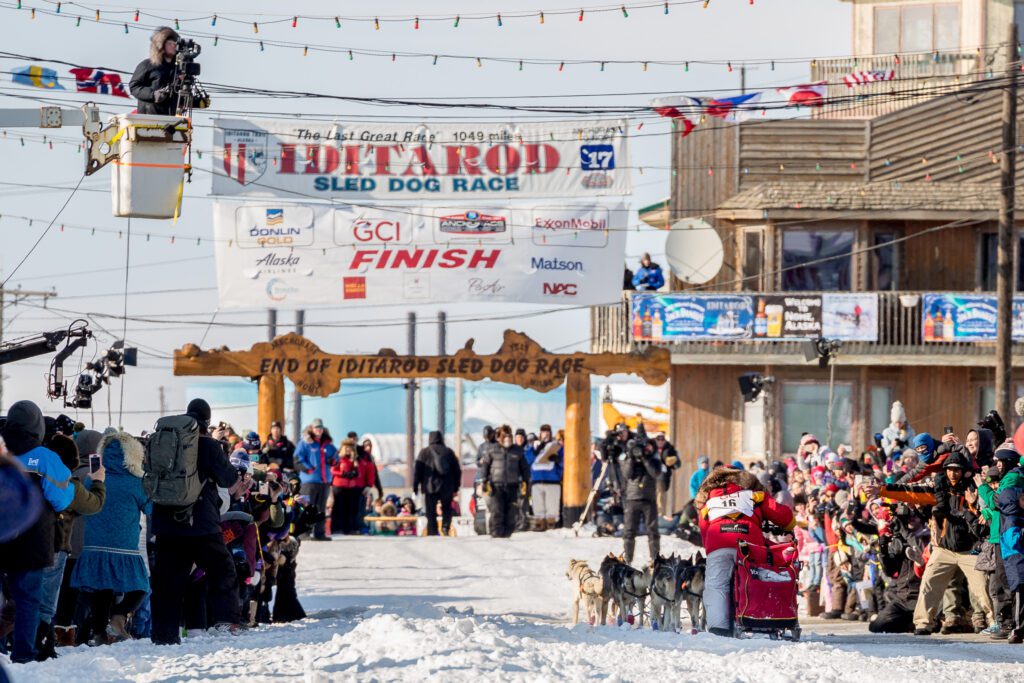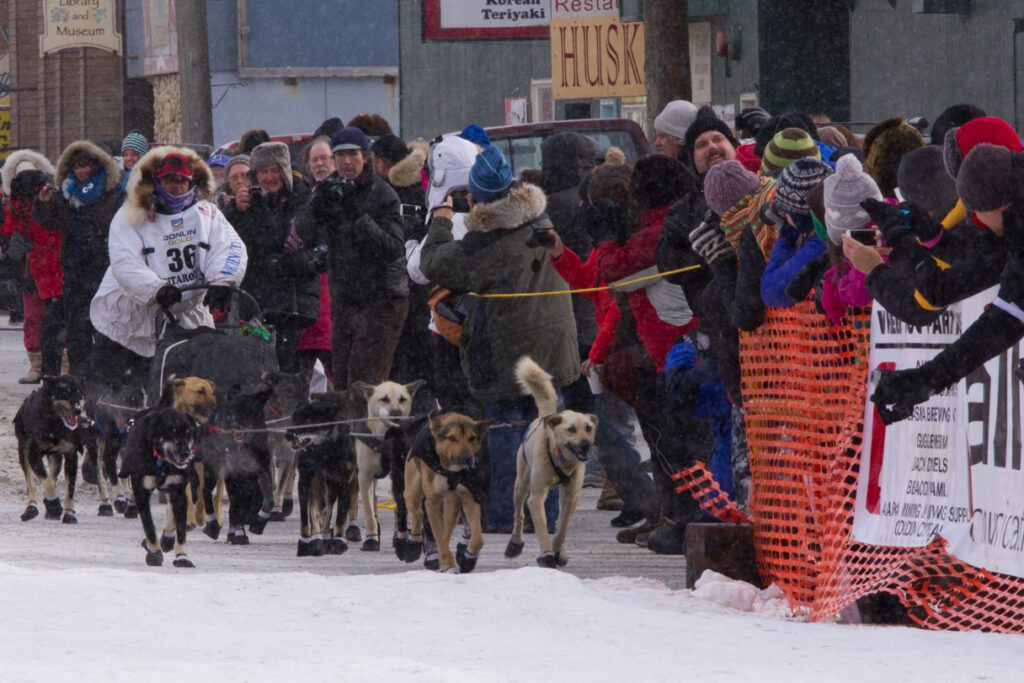The Iditarod is awesome. Not Ninja Turtles ‘90s “Kowabonga, gnarly” slang word awesome, but closer to the 19th century metaphysical Awe-inspiring kind of awesome. Even for a newbie like me, safe and far from the trail’s travails (unlike our fearless and intrepid news leader, Laureli), life amid Iditarod feels like it’s lingering in a state of exception as all eyes track the race.
It’s unclear to me whether the excitement and sense of immersion is true for everyone across the state, or just those with stake in the race—be they mushers hoping to one day run it, media members with an occupational obligation to mention it in the context of news, or sports likers. And since Nome is willingly pulled into the whole hullabaloo by nature of being the geographical and spiritual terminus for the race, I’m not sure how far the palpable excitement bubbling up day by day here can be generalized outward.
But, with that little caveat, it feels like the Iditarod is everything. And part of that, for me, is because at least once a day, but usually more, I get sucked into the nitty-gritty details of the race. At noon each day so far I cover KNOM’s race updates along with a co-host. It involves converting data into information. We comb through times in and out of checkpoints, rest-times, average speeds, weather readings, GPS locations, and scraps about equipment, number of dogs on the line, time differentials between chunks of trail, and how few hours the racers themselves have slept since Sunday. We get context from Laureli’s substantive interviews with the names we read over and over again, lending flesh to skeletons. At least once a day (for example, in the next 45 minutes) I’ll scour coverage from reporters putting out quick evaluation and analysis onto websites, and do my best to ape the voice, rhetoric, and focus of an old hand at unpacking the race.
The updates create a myopia that’s easy and fun to slip into. The rush to write-up a script (not everyone does that, but I’m not quick enough to go off the cuff), coordinate with an update partner, checks the lists for last minute leader updates, etc. It’s a scramble, and a good hour of steady adrenaline. All the usual trappings of office work get pushed out of mind: emails can wait, news stories can wait, manners can wait, re-heating luke-warm coffee can wait. It’s all about getting ready to provide a half-decent glimpse of what’s happening hundreds of miles away on wooded trails covered in dog tracks.
And wouldn’t it be great if that myopia, that focused frenzy, were real? Instead, it’s a big delusion—the summoning of a sense of stakes from spectacle. That does not mean it doesn’t matter, just that it isn’t wholly real. The value is fictive rather than literal.
Like any self-respecting nerd-type, I think that sporting events do a better job than almost anything else of lulling us into a simplified, amplified world of heroism. This is clearer in a match (football, in the lower-48, let’s say) than a race, because it maps more easily onto a moral dichotomy: good guys/your team versus bad guys/other team. The messy work of locating moral meaning is neatly cleaved in twain. In a race like the Iditarod there’s not the same sensation of moral bifurcation, but I do find myself attaching different virtues to the various racers we’re always mentioning. There’s Zirkle the Patient, King the wise (and imperial), Buser the Clever, Seavey the Younger, Baker the Swift, Seavy the Elder, and Petit the French.
Beneath the mild mapping of morals onto people I’ve never met, there’s a propensity for projecting lazy-but-comfortable narratives onto the gradual progress of all the mushers. “Come back,” “redemption,” “desserts,” and “endurance” are ways I catch myself making sense of the changing names and numbers corresponding shifts in racer positions. By bringing in bits from a mushers personal life, her or his past races, and the flecks of color they give in interviews, we create characters for them that suit our needs.
So far it has been easy and a treat to slip into the all-encompassing delusion of the Iditarod. And here’s what I mean by that: full emersion into an artificial world is a treasure, a rare gift. Particularly when that world trumps our own. It’s what a great movie, an engrossing book, a complex work of art accomplishes: the bland banality of everyday existence yields to heroism, epic stakes, emotional immediacy and poignancy. Masterful fictions open us up the important parts of our humanity, and this race is no different. Particularly from far away it is an easy event to romanticize because the tactile brutality of numb appendages, aching knees, and world-erasing fatigue are abstract variables on the periphery, the way movie characters never seem to use the bathroom though you know they must (and if you’re wondering about mushers and bathrooms, here).
The permission and ability—at work, no less—to dive in a far-away realm of ice and glare and noble beasts and exhaustion and crashes and brute perseverance on frozen rivers in the dead of night is to dwell among the myths that draws many to Alaska and the wilderness. And for a couple hours each day this week I’ve gotten to inhabit that cool cold world with a sense of urgency and totality not often afforded. That is one reason why I think the Iditarod is awesome. Another reason is because humans use teams of dogs to move more than a thousand miles during winter in Alaska.







